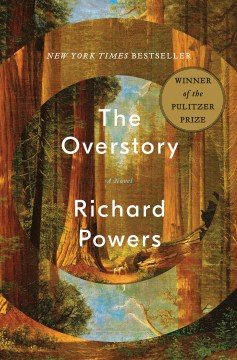Author: Sheila Watt-Cloutier
Title: The Right to Be Cold
Genre: Nonfiction (memoir)
Publication Date: 2015
Number of Pages: 337
Geographical Setting: Canada, both in villages like Kuujjuaq and in the southern cities
Time Period: 1953-2015
Summary: Sheila Watt-Cloutier tells her life's story as an Inuit woman driven to preserve the traditional lifestyle she had as a child. Watt-Cloutier opens her memoir with vignettes from her childhood, ranging from traveling by dog sled to being sent to a residential school in Churchill. Watt-Cloutier is separated from her childhood home of Kuujuaq for a time, and upon her return discovers countless detrimental changes to her village. The dog sled teams have been replaced by snow mobiles, alcoholism, violence, and disease plague her beloved village. Watt-Cloutier changes the trajectory of her life to be one of cultural renaissance, leading many initiatives to safeguard the way of life of the circumpolar Indigenous peoples.
Watt-Cloutier tackles every topic with nuance and integrity, opening the door for multiple interpretations of events. She discusses how her white-passing appearance perhaps enabled her to be a more palatable voice for her people to the white power majority, but how this also at times affected her self-perception of her identity. Another such example is Watt-Cloutier's shunning by environmental NGOs like Greenpeace and the World Wildlife Fund, even though all three had the goal of stopping climate change. Watt-Cloutier attributed this to the popular movements against hunting of Arctic wildlife, which was at odds with her people's subsistence hunting relationship with their land. Other divisive topics she tackles are the white father who abandoned her family, intra-community debates on how to adapt to a changing world, education, and drug abuse.
Subject Headings (per Novelist):
- Climate change
- Environmental protection
- Environmentalists
- Inuit women
- Watt-Cloutier, Sheila
- Weather
Nonfiction Appeals:
Characterization - "Nonfiction characters tend either to be quickly defined and remain relatively constant or to be slowly revealed as they develop over the life of the story" (Wyatt, 2007).
Watt-Cloutier comes into her own as a politician and change-maker throughout the book. She initially is somewhat adrift in terms of what she envisions her life's mission to be; at first, she dreams of becoming a doctor, but her grades don't allow it. She tries her hand in education but faces too much friction with her co-workers. Eventually, several chance meetings allow her an avenue into politics, where she quickly becomes globally recognized. An introvert at heart, being thrust into the spotlight is hard for Watt-Cloutier, and she faces several personal tragedies as she grows older. Several family members die in quick succession, and her marriage falls apart. Nonetheless, Watt-Cloutier describes herself as having found clarity and resonance in the work she does.
Story Line and Subject - "Story line provides a place in the appeal construct to consider how the subject is approached" (Wyatt, 2007).
As Watt-Cloutier realizes the depth of the suffering ravaging her childhood home, the reader comes to this conclusion alongside her. It hits with the needed impact to provide the emotional connection needed to invest in Watt-Cloutier's viewpoint and ideology. When she learns of a new way that climate change has impacted her people, we as readers are devastated alongside her. This is reflective in a meta way of Watt-Cloutier's strategy of appealing the political elite of the globe to understand the human cost of climate change felt foremost and strongest by Indigenous communities.
Detail - "Details are the canvas on which the book is set; they bring out a richness in the book and create a backdrop to the reading experience" (Wyatt, 2007).
This book is laden with details both cultural and personal. Many words in Watt-Cloutier's native Inuktitut language are introduced and then used in place of the English the rest of the text is written in. Watt-Cloutier includes information about other Indigenous human rights movements happening concurrently with her tenure in office, such as those by Amazonian Indigenous populations and by Samoans. This adds to the feel of this being a a truly global movement that Watt-Cloutier was a part of, and adds to the gravitational feel of the book. It made it feel like a revolution. Which, of course, is exactly how Watt-Cloutier aimed to frame it.
Three terms that best describe this book:
- Memoir
- Cultural history
- Emotional
Nonfiction Read-alikes:
Braiding Sweetgrass by Robin Wall Kimmerer
Kimmerer, R. W. (2013) Braiding sweetgrass. Minneapolis: Milkweed Editions.
Common appeals: Indigenous knowledge, environmentalism, human interactions with the environment
The Archipelago of Hope by Gleb Raygorodetsky
Raygorodetsky, G. (2017). The archipelago of hope. New York: Pegasus Books.
Common appeals: Indigenous knowledge, Canadian literature, climate change
Storms of My Grandchildren by James Hansen
Hansen, J. (2020). Storms of my grandchildren. New York: Bloomsbury.
Common appeals: Climate change, environmentalism, call to action
Fiction Read-alikes:
Yellow Earth by John Sayles
Sayles, J. (2020). Yellow earth. Chicago: Haymarket Books.
Common appeals: Community activism, Indigenous land, pollution
The Book of Rain by Thomas Wharton
Wharton, T. (2023). The book of rain. Toronto: Random House Canada.
Common appeals: Pollution, Canadian literature, humans and nature
The Overstory by Richard Powers
Powers, R. (2018) The overstory. New York: W. W. Norton & Co.
Common appeals: Environmentalism, humans and nature, women activists
References
Watt-Cloutier, S. (2015). The right to be cold. Toronto: Penguin Canada Books.
Wyatt, N. (2007). The readers' advisory guide to nonfiction. American Library Association.








